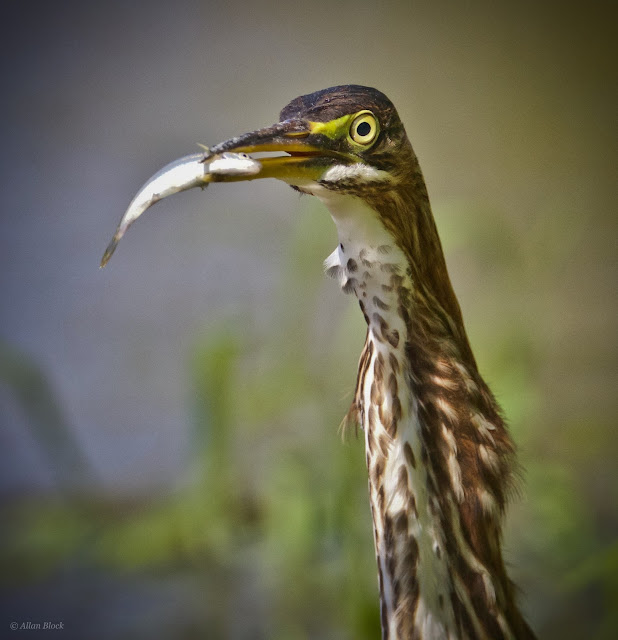With all the grace and balance of a ballerina, a beautiful Great Egret visits Villa Grove Park in Mequon, WI. The green mudflats of the Milwaukee River provide a soft landing pad and plenty of food opportunities.
Egrets are large wading birds with long legs and a wide foot print. They thrive on aquatic animals...mainly fish.
Their method of hunting is to remain still and wait for prey to come to them.
Great Egrets are beautiful by nature, but it takes some work to keep up appearances.
Much time is spent on cleaning and straightening, as you might expect for a white bird living in a muddy environment.
A close relative to the Great Egret is the Great Blue Heron...they're both herons. At home in the water as well as the trees Great Blue Herons share the same dagger-like bill used to stab or grasp prey.
Proudly displaying the last of this season's breeding plumage, a Great Blue Heron shares this bend in the river with the Great Egret.
With a seven foot wingspan, the Great Blue Heron is the larger of the two birds.
With stealth and patience they get their prey by a slow and steady advance and a final strike.
Time passes quickly in the presence of these beautiful birds. You do not control the time they allow you. Enjoy the time they grant you.
Allan
Credits: Cornell Lab of Ornithology, All About Birds




























